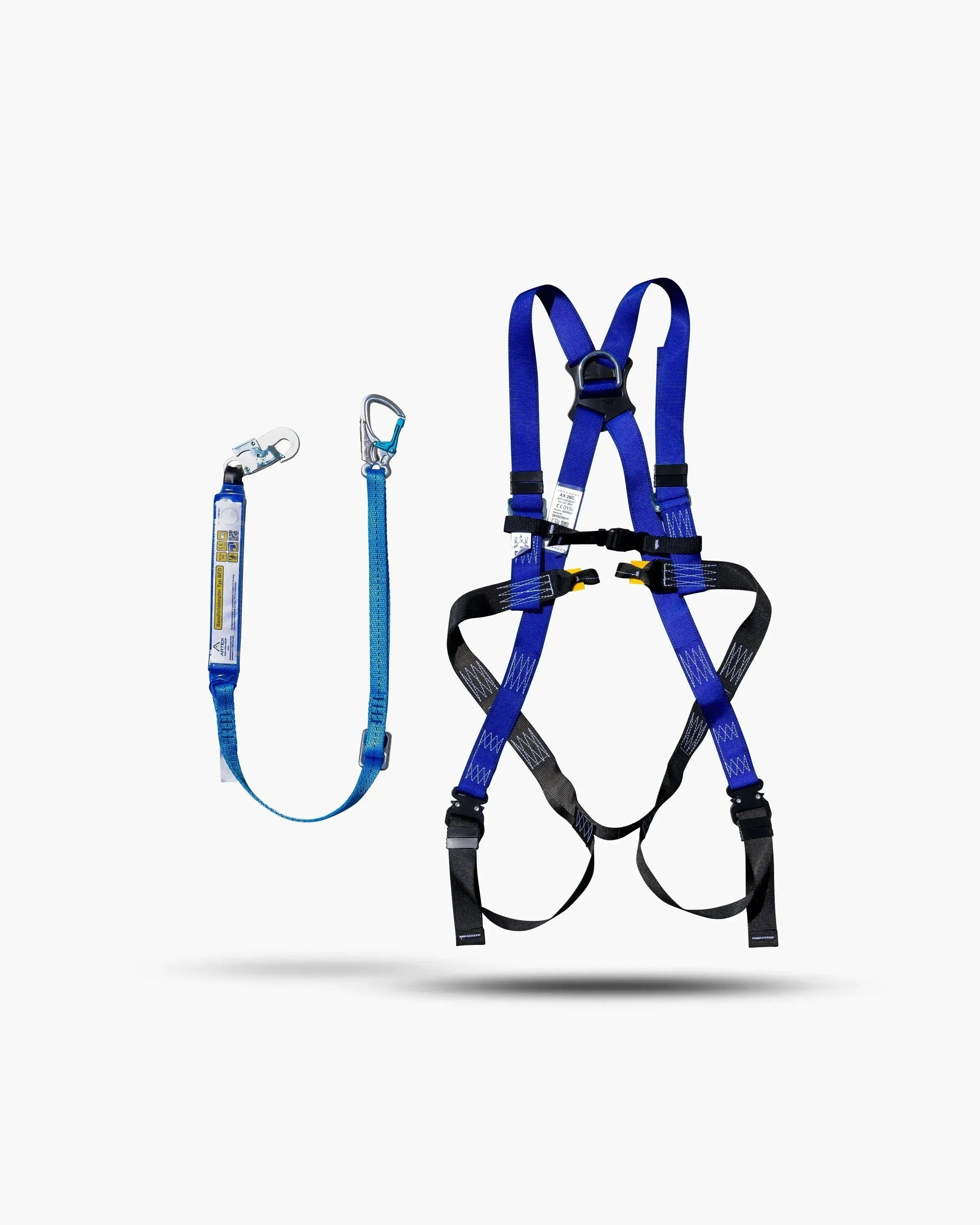When selecting a work platform, the working height is often the first consideration. However, the basket load – the maximum load-bearing capacity of the work platform – is just as important. This determines whether you can perform your work safely and efficiently – or whether you'll have to take risks, accept delays, or choose the wrong platform for the job site.
This article shows you how to realistically calculate the required load capacity, what is important when it comes to basket load, and which mistakes you should avoid.
What does basket load actually mean?
The cage load describes the permissible payload in the work cage of a platform – that is, the maximum total weight of people, tools, and material that the platform can safely support when raised. The manufacturer's values always apply – they are binding and must not be exceeded.
Important: The cage load does not refer to the total weight of the platform , but only to the working area in the cage. Depending on the type of equipment, it is usually between 120 kg (small vertical lifts) and up to 450 kg (large telescopic or scissor lifts) .
Why too little basket load becomes a problem
If the permissible basket load is exceeded, modern work platforms usually have a safety system that automatically blocks the lifting function. This protects the equipment but results in downtime on the construction site. In the worst case, a new platform must be organized.
Consequences of an incorrect assessment
- Work must be divided or interrupted
- Time delay due to machine change
- Increased costs due to incorrect rental or subsequent delivery
- Safety risks due to impermissible overloading
How to calculate the required basket load
The calculation is basically simple—as long as you plan realistically and don't forget anything. The following components contribute to the basket load:
1. People in the basket
Allow at least 80 to 100 kg per person , including clothing, PPE (e.g., safety harnesses), and other equipment. Two people typically weigh around 180 to 200 kg.
2. Tools and equipment
Even if it's just a cordless screwdriver, it can quickly add up when you're carrying multiple tools, boxes, drills, cables, lamps, or measuring devices. Plan for at least an additional 20 to 40 kg.
3. Materials and tools
Especially during installations, assembly work, or facade cleaning, construction materials are also carried on board: pipes, sheets, paint buckets, cable reels, or components. The weight of these can easily reach 50 kg or more.
Example calculation:
- 2 people 90 kg each = 180 kg
- Tool box, cordless tools = 30 kg
- Mounting material = 60 kg
→ Total: 270 kg required basket load
In this case you need a work platform with a basket load of at least 300 kg , preferably with a reserve upwards.
Differences depending on the stage type
Not every platform has the same load capacity. When selecting, consider not only the height or reach, but also the permissible basket load:
- Vertical lifts : usually only 120–150 kg – ideal for one person with light tools
- Scissor lifts : 230–450 kg – high platform load, perfect for several people + equipment (except megadecks, which can reach up to 1,000 kg)
- Articulated boom lifts : approx. 200–250 kg – good for flexible work with moderate loads
- Telescopic platforms : up to 300 kg – depending on the model with a long reach and powerful lifting arm
- Truck-mounted platforms : vary – often limited to 200–250 kg, ideal for two people + tools
What role does the stage itself play?
Many modern platforms are equipped with load-sensing systems that automatically shut off in the event of an overload. Some models have two basket load ranges : one with full reach for lower loads, and a restricted range for maximum loads. Always follow the manufacturer's instructions and only use appropriately trained personnel.
Safety first – plan generously
If you're unsure about the exact load capacity you need, it's better to choose a larger size. A platform with a 350 kg load capacity is usually more economical than one that's too small and won't be fully utilized.
Our tip: Don’t calculate “just above the minimum”, but also think about safety reserves for additional material or unexpected requirements .
BIBERGER advises you – and supplies suitable stages
To ensure you're on the safe side, we're happy to advise you on selecting the right platform—including load capacity, working height, and reach. Together, we'll find the optimal solution for your site and your project . Our work platforms are modern, tested, and ready for immediate use—with clear information on the permissible basket load.















Share:
Straight line or driveway? Realistically plan the reach of work platforms
Rent an industrial machine: How to find the right device